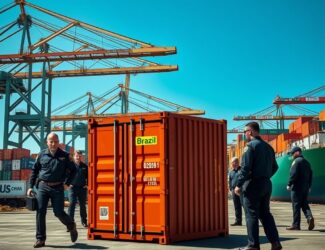
Australian Study Reveals Potential to Enhance Concrete by 30% Using Coffee Waste
In an innovative move that combines environmental sustainability and construction technology, Australian scientists have discovered a way to use charred coffee grounds to enhance concrete strength by up to 30%. This study, published in the journal “Cleaner Production” and reported by “Science Alert,” provides an effective solution to the problem of coffee waste accumulation and contributes to improving the environmental performance of building materials.
Organic Waste: A Global Environmental Problem
The world produces approximately 10 billion kilograms of coffee waste annually. These wastes often end up in landfills, where they decompose and release greenhouse gases like methane and carbon dioxide, significantly contributing to climate change.
Innovation in Waste Utilization
Engineer Rajeev Rouweyha from the Royal Melbourne Institute of Technology (RMIT) explained that disposing of organic waste poses a major environmental challenge due to the harmful gas emissions. With the global construction market booming, the demand for resource-intensive concrete is increasing, causing additional environmental challenges.
Sustainability in the Construction Industry
The construction industry requires massive amounts of natural sand, typically extracted from riverbeds and banks. This continuous extraction causes significant environmental damage, including erosion of natural habitats. Researcher Ji Li from RMIT pointed out that maintaining a sustainable supply of sand is a long-term challenge due to the limited nature of resources and the environmental impacts of sand extraction.
Pyrolysis: Turning Waste into Resources
Organic products like ground coffee cannot be directly added to concrete because they leach chemicals that weaken building materials. Therefore, the RMIT research team used a process called pyrolysis, heating coffee waste to over 350 degrees Celsius while depriving it of oxygen. This process produces a carbon-rich biochar that can be integrated with cement to enhance its strength.
Promising Results and Future Challenges
The study found that treating coffee at 500 degrees Celsius was not as effective, highlighting the importance of precise conditions in the pyrolysis process. Despite the promising results, researchers emphasized the need to assess the long-term durability of the hybrid coffee cement under various conditions such as freeze/thaw cycles and water absorption. The team is also working on producing biochar from other organic waste sources like wood, food waste, and agricultural residues.
Toward a Circular Economy
Shannon Kilmartin-Lynch, a co-researcher in the study from RMIT, stated that “these exciting results offer an innovative way to significantly reduce the amount of organic waste going to landfill.” Researchers assert that shifting to a circular economy approach can greatly contribute to preserving natural resources and improving environmental sustainability. The circular approach relies on reusing resources and reducing waste, thus contributing to achieving a sustainable environmental balance.
Sustainability of the Future
While the research is still in its early stages, these results hold great promise for improving environmental sustainability in the future. Using coffee waste to enhance concrete is not only a solution to the problem of waste accumulation but also represents a step towards developing more sustainable and environmentally friendly building materials.
Additional Benefits
The biochar produced from the pyrolysis of coffee waste can improve the properties of concrete, such as increasing its resistance to erosion and damage. This means that buildings and structures using this type of concrete may be more durable and require less maintenance, reducing long-term costs and contributing to a more sustainable future.
Conclusion
The Australian study on using coffee waste to enhance concrete provides an excellent example of how an environmental problem can be transformed into an innovative and sustainable solution. Thanks to this research, we may witness a shift in how we manage organic waste and utilize it to develop stronger and more sustainable building materials. This approach enhances our ability to address major environmental challenges and underscores the importance of innovation in achieving environmental sustainability.



